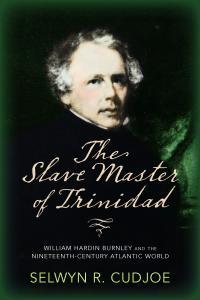Reparatory Justice
By Dr Selwyn R. Cudjoe
December 04, 2018
The Jamaica Gleaner, it is true, was impetuous. On November 25 it announced that the University of Glasgow (UG) and the University of the West Indies had reached an agreement regarding reparative justice. According to the Gleaner, UG had agreed to pay "£200 million (approximately J$34 billion) of value in reparation payments to The UWI."
The Gleaner quoted Sir Hilary Beckles, Vice Chancellor of the University of the West Indies, as saying: "The University of Glasgow has recognized that Jamaican slave owners had adopted the University of Glasgow as their university of choice and that £200 million of value was extracted from Jamaica and the Caribbean."
A day later, Sir Hilary noted that the Gleaner's headline was incorrect. He admitted that there was no confirmation yet about this deal "but the quoted content of the story is correct, the headline that suggests an agreement to pay £200 million to The UWI is not. The universities are working through a Memorandum of Understanding (MOU) built upon the principles of 'reparatory justice.' But there is no 'agreement about the repayment of £200 million to The UWI."
The Gleaner's anxiety was understandable since Jamaicans, more than most of our Caribbean brethren—with the exception of the Haitians—were exploited mercilessly by the English and Scottish planter class. To Jamaicans, the news of reparatory justice couldn't come soon enough.
Earlier this year I read Christer Petley's book, White Fury, that examines the life of Simon Taylor (1760-1813), Jamaica's biggest slaveholder. It is instructive to compare Taylor's life with that of William Hardin Burnley, the subject of my biography.
Taylor attended Eton; Burnley, Harrow School for Boys, both of which are prestigious prep schools (the British called them public) in England. Both of them arrived in the West Indies at the age of 20 and made enormous fortunes from sugar. Each remained resident slave owners in the Caribbean. Taylor had 2,248 slaves; Burnley had 980 slaves.
Both Taylor and Burnley violently opposed the liberation of black people. Taylor fought against stopping the slave trade which ended in 1807; Burnley traveled to London in 1830 to lobby to maintain slavery which ended in 1834.
Each man believed that black people were inferior to whites and depicted them as children. Both were members of the local legislatures: Taylor was a member of the Jamaican Assembly; Burnley, the senior member of Trinidad's Council of Government.
When the slaves rose up in Haiti in 1792, Taylor blamed it on the British abolitionist; when they rose up in Trinidad in 1849, Burnley blamed it on the 1848 revolution in France. Both Taylor and Burnley believed Africans possessed no agency on their own. They died at the age of 73 and 70 years respectively.
One can feel the happiness the Gleaner felt that some form of reparation was in the offing. Their joyfulness reflected the feeling that blacks in the Caribbean were beginning to get their just due. Both Petley and I point out how the British overlords exploited the labor of our forefathers.
Sir Hilary was on point when he emphasized: "In good faith the two universities, ever since the Vice-Chancellor of the University of Glasgow, Professor Sir Anton Muscatelli, indicated that his university seeks to be excellent and ethical, have had excellent conversations about how the University of Glasgow can contribute to clearing up the colonial legacies of slavery that are holding back the region."
It is this ethical impulse that led UG to reexamine its involvement with slavery. Dr. Stephen Mullen and Prof. Simon Newman, authors of Slavery, Abolition and the University of Glasgow, explained that their report on UG's involvement with slavery was guided by how American universities such as Brown, Yale and Georgetown "have dealt with the issue of slavery-tainted gifts."
While Mullen and Newman could not identify every source of slavery money that enhanced UG, they were clear that UG "enjoyed a significant financial benefit from slave-holding and the profits made from slave-ownership and the trade in slave-produced gifts." Any ethnical response to the conduct of their elders demanded that they call upon their university to try to repair the damage the latter caused.
No one can deny the indefatigable work Sir Hilary has put into this effort. While he says rather modestly that he has been working harmoniously with the leadership of UG to repair this centuries-long damage, no one should mistake how he uses his scholarship to clarify how the injustices of the past have held us back in this region.
UWI and UG have agreed on a "Reparatory Justice MOU." The content of the reparations is being structured by a committee. Sir Hilary assured me: "The Glasgow team is committed to a reparatory justice approach that will see considerable resources being made available to the region."
In 2013 Sir Hilary was granted an honorary doctorate from UG, which suggests the high esteem in which the university holds him. It is conceivable that he is working and influencing the MOU from both sides of the Atlantic. What stands out to this observer is the level head he keeps when all around may be losing theirs and how he bridges the gap between past wrongs and the desirability to achieve meaningful outcomes in the present.
All things being equal, there might be a signed MOU before the end of the year.
Professor Cudjoe's email address is scudjoe@wellesley.edu. He can be reached @ProfessorCudjoe.
Share your views here...

The Slave Master of Trinidad by Dr. Selwyn R. Cudjoe
|

